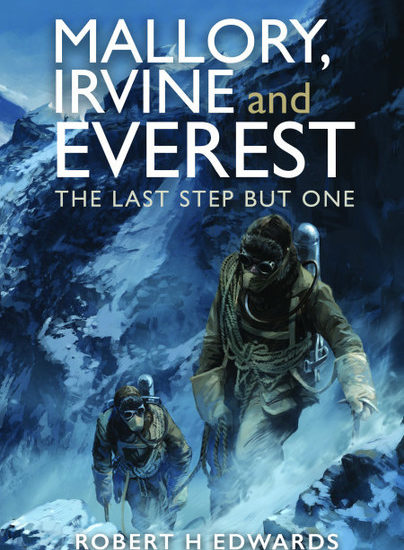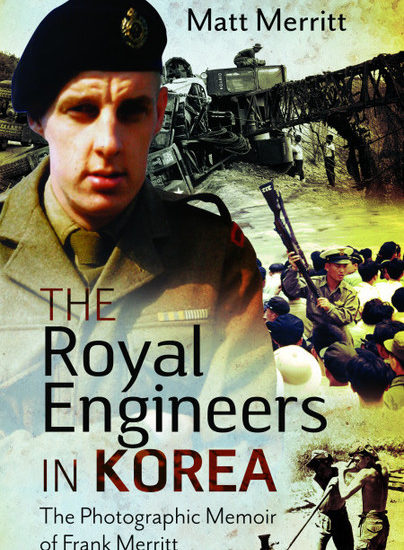Author Guest Post: James Goulty – An Airborne Soldier at War and Peace
Bill Ness 12th (Yorkshire) Battalion Parachute Regiment
Today we have a guest post from Pen and Sword author James Goulty… Enjoy!
Towards the end of
the First World War General William Mitchell, the noted air power
theorist who commanded the US air forces in France during 1917-18,
proposed the dropping of men from 1st
US Infantry Division behind the German lines. However, the plan was
shelved before it could be put into effect because the war ended.
Subsequently, demonstrations of the deployment of paratroopers were
held in the US but failed to receive official backing.
In contrast, in
1927 the Soviet Union was the first nation to deploy paratroopers in
an active combat role during operations against tribesmen in Asia,
and during the 1930s went on to establish an independent parachute
division. Developments in the Soviet Union had been observed by an
amazed Field Marshal Wavell, who later became the Commander-in-Chief
in the Middle East and then India. Yet the War Office in Britain was
slow to fully appreciate the potential of airborne forces.
The concept
received renewed consideration with the onset of the Second World War
when the British authorities were alarmed by the dramatic successes
of German airborne units, forged under the direction of General Kurt
Student. In April 1940 these undertook an extensive part in the
invasion of Norway and Denmark, and were later deployed against
targets in Belgium. The Germans even envisaged that approximately
8,000 paratroopers would be used in the initial wave of Operation
‘Sealion,’ their proposed invasion of Britain.
On 22nd
June 1940, the Prime Minister (Winston Churchill) issued an
instruction to the Chief of Staff calling for the establishment of ‘a
corps of at least five thousand parachute troops.’ By the end of
that year General Sir Frederick Browning had been tasked with raising
a fully functioning airborne division. This required the necessary
logistical support and training organisation. Under the control of
the RAF the Central Landing Establishment was formed at Ringway that
comprised a Development Unit, Glider Training Squadron and Parachute
School. Eventually, the British Army was able to field two complete
airborne divisions during the Second World War. The 1st
Airborne Division gained extensive operational experience in North
Africa and Italy, prior to famously being deployed at Arnhem as part
of Operation Market Garden in September 1944. The 6th
Airborne Division, with which Bill Ness served, was formed in Britain
during 1943, and deployed on D-Day and in North-West Europe during
1944-45.
Bill was born and
bred in Byker, Newcastle upon Tyne and left school at 14 years old to
go and work for the Co-Operative Stores. He had originally wanted to
be a plumber but his mother insisted that the Co-op offered steady,
secure employment. As Bill recalled ‘in those days you didn’t
argue with your parents and you did as they said.’ He was working
for the Co-op at the start of the war, but once he was 17 years old
he joined his local Home Guard unit.
Contrary, to the
image portrayed by the popular BBC TV comedy ‘Dad’s Army,’ the
Home Guard was not entirely populated by bungling idiots, although
its early days were pretty chaotic while it was still classed as the
Local Defence Volunteers. It was primarily intended for local defence
against the threat of enemy seaborne and airborne invasion. However,
as the historian S. P. Mackenzie explained, once that threat
diminished, the Home Guard increasingly became a valuable source ‘of
stand-in troops’ at a time when Britain’s overall manpower pool
was depleted. Notably Home Guard units were especially useful in
manning ant-aircraft guns and rocket batteries with Anti-Aircraft
Command.
For Bill membership
of the Home Guard proved an ‘inspiration.’ As a young lad it
brought him into contact with several old soldiers, many of whom were
veterans of the First World War with several medals. These men taught
him a lot about army life, including respect for authority and that
you didn’t question orders. As Bill explained, ‘always do as you
were told. If you couldn’t salute smartly turn-about and just
disappear.’ Similarly, he came to appreciate that ‘if you
received an order that you knew was stupid, once again salute smartly
and disappear. Never argue with anyone of superior rank. I learnt
that before I went into the army.’
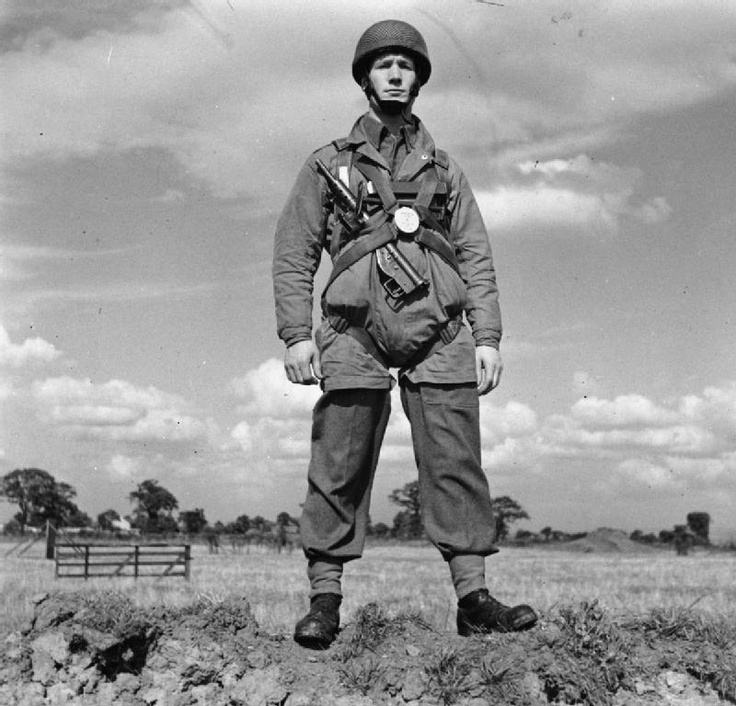
The Home Guard also
gave Bill a foundation in basic military skills such as discipline,
drill, handling small arms, fieldcraft and elementary tactics. As the
Home
Guard Manual 1941
stressed the aim was ‘to have available an organized body of men
trained to offer stout resistance in every district, and to meet any
military emergency until trained troops can be brought up.’
During 1942-43 Bill
joined the army and was posted to Number 4 Infantry Training Centre
at Brancepeth Castle, County Durham. This provided recruit training
for the Duke of Wellington’s Regiment which he wanted to join, and
the Durham Light Infantry. At the ITC all drafts underwent a six week
course designed to turn civilians into soldiers. Bill remembered that
it taught you ‘the rudiments of army life,’ although he had
already experienced much of this with the Home Guard. There followed
a further ten weeks of infantry training with the Duke of
Wellington’s Regiment, after which Bill was officially classed as
‘a trained soldier.’
Bill and a
comrade from Sheffield were held back owing to their young age.
However, both were granted the rank of unpaid lance corporal with the
Duke of Wellington’s Regiment. This was an unsettling time for
Bill. Although he had successfully completed his training, he
considered that he was too young and inexperienced for the role and
responsibility he had been given. ‘Sometimes I was in trouble for
overstepping the mark, other times I was in trouble for not stepping
over the mark.’
When a company
commander from 12th
(Yorkshire) Battalion Parachute Regiment visited Bill’s unit
seeking personnel for training as airborne soldiers he and his pal
from Sheffield were enthusiastic and volunteered. The 12th
Battalion became part of 5th
Parachute Brigade that was assigned to the 6th
Airborne Division, formed in the summer of 1943 under the command of
General Sir Richard Gale. The British organisation stipulated that
each airborne division should have two parachute brigades and one
air-landing brigade as their main components. This was because as
General Gale emphasised, ‘parachute infantry by their nature were
lightly equipped, possessing neither anti-tank guns nor mechanical
transport, both of which the air-landing battalions carried in their
gliders. These more heavily equipped troops were of particular value
in defence and gave depth to the general tactical layout.’
Initial airborne
training occurred at a camp near Hardwick Hall in Derbyshire, which
was comparatively close to the Central Landing Establishment at
Ringway on the other side of the Pennines. According to Hilary
Saunders in The
Red Beret,
his history of the wartime Parachute Regiment, Hardwick ‘became for
the parachute soldier ‘‘what Caterham is to the Brigade of
Guards, a place of trial but not of error.’’ Bill found it
completely different from his earlier training with a much stronger
emphasis on physical fitness. There were also night exercises, often
in poor weather, with little or no time to rest before staring work
the next day. As he put it they really ‘took you to the limit.’
Essentially the training was designed to foster toughness, physical
fitness, initiative and common sense that were vital perquisites for
the airborne soldier to possess.
After this,
parachute training commenced at Ringway, which ultimately entailed
jumping from balloons and aircraft. It was important for men to
overcome their fear, particularly when hurling themselves out of an
aircraft, and arguably this was one of the greatest challenges facing
most volunteers. Years later Bill admitted he sometimes found his
training scary, although he came through it.
One aspect that he
didn’t like was when learning the technique of parachute jumping
and landing using a machine. ‘You put a belt on and as you jumped
it started reversing while you jumped before easing up just as you
hit the ground and rolled over.’ This was probably what Hilary
Saunders described as the ‘Fan.’ A ‘steel cable, wound around a
drum was attached to the harness of the jumper, who then leapt from a
platform’ about 25 feet high onto a mat. The jumper’s weight
caused the drum to revolve, ‘but its speed was checked by two vanes
or fans, which revolved with it and thus created an air break.’ The
idea being that a soldier would land with about the same force he
would encounter during a real parachute jump.
During training
aging Whitley bombers were predominately used to drop parachute
troops, although later in his service Bill encountered the Stirling
bomber and Dakota. In general the latter was preferred because as a
purpose built cargo aircraft with a side entry/exit door it made the
whole business of parachute drops much easier to accomplish than when
using bombers converted for the role. According to one soldier quoted
in By
Air into Battle the Official Account of the British Airborne
Divisions,
on jumping from an aircraft ‘your legs are immediately blown into a
horizontal position by the slipstream and you find yourself parallel
to the ground.’ Then there is a ‘nibbling feeling at your
shoulders’ just as the canopy opens with a jerk.
Bill encountered
one night drop during training which proved very ‘queer as
everything was still.’ Also he vividly recalled one of the RAF
parachute instructors, a flight sergeant, who stated ‘it doesn’t
matter if you fall out now you’re up as high as you can go.’
These parachute instructors were often characters and came from a
variety of backgrounds. Ultimately they proved the unsung heroes in
the creation of Britain’s wartime airborne forces owing to their
important training role.
Men could refuse to
jump during training without disgrace. However, once they had
completed seven jumps and received their wings, it was an offence to
do so, punishable by at least 56 days detention, and the ignominy of
having their wings stripped off in front of their commanding officer.
Having passed
parachute training and earned the right to wear the much coveted red
beret which had been adopted by airborne units, Bill together with
several soldiers from the Green Howards was posted to barracks at
Lark Hill. Here trained infantrymen such as Bill formed a cadre for
‘C’ Company 12th
Battalion Parachute Regiment as it was being brought up to its war
establishment.
He soon became
accustomed to a morning drink of ‘gunfire’ or tea and numerous
training schemes. This included runs in full kit or G.1098, and
culminated in major exercises that were to prepare his unit for its
eventual deployment on D-Day (6th
June 1944). One of the tasks that had to be mastered was conducting
parachute jumps with men and specialised containers that carried
weapons and ammunition. Given that parachute troops were by their
nature comparatively lightly equipped, this was particularly
important for them to perfect. It was not helped by the design of
containers many of which split open on initial exercises. Bill
recounted that it was vital to synchronize proceedings and have men
and containers in the correct place so they didn’t collide on a
drop. ‘Numbers 1 to 5 would jump, followed by container, container,
container and then number 6.’ It became possible to drop weapons
such as Bren guns and two-inch mortars in these containers, plus
ammunition. A bag was also used that could be connected to
parachutists and was capable of holding supplies of around 100 pounds
in weight.
On D-Day the 6th
Airborne Division was intended to be deployed in a five-mile strip
between the Rivers Orne and Dives to secure the left flank of the
seaborne landings, particularly against the threat of counter attack
by German armoured reserves located in the Caen area. David Howarth
in Dawn
of D-Day
neatly sums up the Division’s plan as follows:
12.20 A force in
gliders to land on the Orne and canal bridges.
12.20 Pathfinders to
drop by parachute, to mark out dropping zones for the main parachute
forces.
12.50 Main parachute
drop to begin. Objectives: to demolish the Dives bridges, reinforce
the defence of the Orne and canal bridges, capture a coast defence
battery, seize the territory between the rivers, and clear landing
zones for the main glider force.
3.30 Main force of
72 gliders to land with anti-tank armament, transport and heavy
equipment.
As part of this
overall plan 5th
Parachute Brigade under Brigadier J. H. N. Poett, were to land north
of Ranville and capture the crossings over the Orne and Caen Canal
near the villages of Benouville and Ranville. The Brigade was then to
secure and hold the area around these villages and Le Bas de Ranville
which was the target of the 12th
Battalion. It was also necessary to clear and protect the landing
zones near Benouville and Ranville so that the gliders transporting
the rest of the Division could be landed safely later in the day.
As Bill prepared to
exit the Stirling bomber which had flown him to Normandy on D-Day, he
remembered thinking ‘the sooner we get out the better.’
Fortunately they hit the correct drop zone and with a sense of relief
he began to recover from the jump and remove his parachute. ‘Wait
till my mother finds out where I am. She will go bloody mad and give
me a right coating!’
To help troops
organize on the drop zone 12th
Battalion had a soldier who would use a policeman’s whistle but
unfortunately he was killed during the landing. Even so, Bill soon
found himself ‘at the back of Ranville looking towards Caen.’ Le
Bas de Ranville was taken comparatively easily and there the
Battalion was able to rendezvous with numerous of its soldiers who
had landed outside the drop zone and using their initiative made
their way to the objective instead of attempting to find the drop
zone. Having established a defensive perimeter, at dawn elements of
‘C’ Company under Captain (later Major) J. A. N. Sim engaged
German units, including formidable self-propelled 88mm guns in an
intense action for which he subsequently was awarded the Military
Cross.
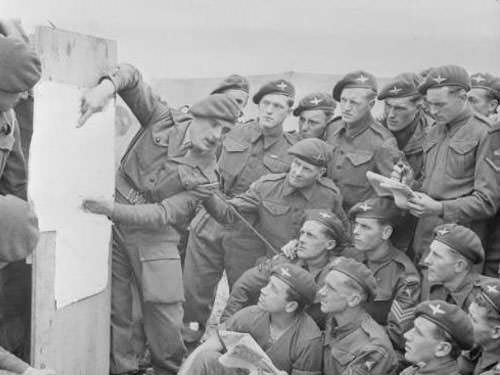
During the fighting
that followed their landing, Bill recalled having to cover a flank
with his mate ‘Stoney’ on the Bren gun. They were directed by
Sergeant Milburn from Greenside, who was awarded the Distinguished
Conduct Medal for his part in the fierce fighting with Captain Sim,
and was described by Bill as ‘a sergeant of the old school.’
Later Bill was given the job of acting as runner tasked with taking
messages to Brigade HQ. He heard wail of the pipes as Lord Lovat’s
Commando unit landed on the coast, not that far from where they were
operating, although they were beyond visual range.
Bill’s unit later
had to advance by leap frogging 1st
Battalion Royal Ulster Rifles, from the air landing brigade of the
6th
Airborne Division, as part of the move towards Caen. They would
themselves then be leap frogged by the RUR. The order went out to
trot and Bill observed ‘we were being fired on from across the
canal but I did not realise it and some of the men started falling
down. I thought what’s the matter with them before appreciating
they had been shot.’
A while later as
they moved towards Longueval, Bill was wounded by a mortar bomb. It
fell in a small patch of the bocage countryside, where he and four
other soldiers were positioned. One was killed and a fragment of the
bomb sliced through the toe of Bill’s boot, injuring him badly in
the foot so that he had to be taken to the Regimental Aid Post.
An artificer
sergeant major in a jeep then arrived at the RAP and said:
‘Are you alright?
You know what’s happening?’ ‘No, no what?’ Bill replied. He
said ‘all walking wounded are going back to England. Can you walk?’
‘Never mind walking’ I said, ‘I can bloody well run!’ He got
me onto the jeep and some of the lads onto stretchers and we went up
to the Casualty Clearing Station which was in the old brick works. A
lad came up who had been hit in the face but they got him there
carefully.
Eventually Bill was
evacuated by a DUKW (an amphibious truck) which took him out to a
Landing Ship Tank for the voyage back to England. It became come
practice in Normandy that these comparatively large vessels would
land their cargo of troops and vehicles at the beachhead and then
taken on board casualties, some of whom even received treatment from
medical staff while at sea. Back in England Bill was operated on to
remove the mortar fragments from his foot. However, after a spell of
recuperation he returned to the 12th
Battalion while it was being deployed during the final stages of the
break out from Normandy. As Hilary Saunders explained this was a
relief for most paratroopers after the frustrations of over two
months of defensive warfare that they had experienced since D-Day.
In September 1944
the entire Division was pulled out of Normandy and returned to
Britain for a refit, respite or leave period, and training. By now
the popular Dakota transport aircraft had become more widely
available and was being deployed to drop parachute units. Bill was
now a combat veteran and received a promotion to corporal which
placed him in charge of a section.
Bill’s next
period of action came in the Ardennes during the winter of 1944-45,
in what has become termed the Battle of the Bulge. On 16th
December 1944 the Germans mounted a thrust for Antwerp, initially
taking the Allies by surprise. Panzer units strove to reach Stavelot,
where there was a large Allied supply depot, and further south the
Germans managed to create a gap in the Allied lines between St. Vith
and Bastogne. The US 1st
Army, under General Courtney Hodge was forced back along a 50 mile
front, but further north the enemy offensive was halted. By 19th
December the overall position had begun to stabilise for the Allies,
helped in part by the German’s shortage of supplies, particularly
petrol. Although the bulk of the fighting on the Allied side was
conducted by the Americans, several British units were deployed to
the Ardennes.
The 3rd
and 5th
Parachute Brigades were rushed to the Continent at short notice,
having conducted some strenuous training since September 1944, which
included exercises in urban warfare. They were to cover the River
Meuse and hold a defensive line between Dinant and Namur, before
eventually going over to the offensive in January 1945. In that
winter of 1944-45 Bill recalled being rushed to South Coast where his
unit boarded the Queen
Emma and
set off across the Channel, only to be chased back into port by
German E-Boats (equivalent to the Royal Navy’s Motor Torpedo
Boats). Eventually, they did manage to cross, and in freezing weather
endured a torrid journey by truck with little protection from the
elements. As Bill remarked ‘sometimes officers would take turns to
let a man sit in the cab of the truck in an effort to keep us warm.’
Initially there was
limited if any fighting for the 12th
Battalion, although the unit formed a succession of defensive
perimeters. Subsequently, the Battalion and the rest of 5th
Parachute Brigade endured a period of particularly grim fighting at
Bure. It was during this that Bill witnessed first-hand an inspiring
example of leadership that had a morale boosting effect on the men.
One of their senior officers in a plummy voice said to a fellow
officer with regard to artillery support: ‘Nigel I am not happy
about the situation. Could you please give them a stonking [soldier’s
term for an artillery barrage].’ As Bill put it hearing this and
the manner in which it was delivered ‘did us the world of good.’
After the Ardennes
12th
Parachute Battalion was deployed in Holland, notably conducting
awkward patrols along the Maas. Not only was the weather cold and wet
but mines posed a constant threat to infantry, particularly along the
river banks. The Battalion and rest of the 5th
Parachute Brigade performed well, and sometimes conducted company
sized sweeps. For the most part from Bill’s perspective as a
section leader, he remembered Holland during early 1945, as being
dominated by ‘a bit of shelling and a few snipers. Nothing we
couldn’t deal with.’
On one occasion a
particularly interesting time was had when they handed over to an
American unit that demanded to know where their tents were. The
paratroopers spent some time attempting to explain to the Americans
that British soldiers didn’t tend to have tents. As Bill recounted
the American troops demanded: ‘Where’s your pup tents?’ He
replied: ‘We sleep in the trench and it’s a three man trench so
that means only one man gets up and the others get two hours sleep.’
As they left the position the Americans were busy putting up their
tents, and Bill felt ‘you could imagine Jerry thinking what the
hell is going on over there?’
During February
1945 the 6th
Airborne Division returned to Britain and began preparing for its
role in Operation Varsity, the crossing of the Rhine. Based on
experience at Arnhem and elsewhere it was decided to transport all
the airborne troops involved in a single lift. They would also be
landing either by parachute or glider on top of their objective which
would dispense with the need for an approach march, during which the
enemy might have been able to hinder their progress. The airborne
assault would occur in daylight to aid navigation and as Bill noted
crucially they would be flying in with the ground forces already
having commenced their operations. Once landed the 6th
Airborne Division was to secure the northern flank of the 18th
US Corps.
A witness to the
drop talked of the roar of aircraft, sound of small arms fire, thumps
of flak or anti-aircraft fire and wave upon wave of parachutists. The
12th
Battalion had difficulty because its rendezvous was under heavy fire,
but the situation improved when a platoon under Lieutenant P.
Burkinshaw captured some German 88 mm guns that had been causing the
main problem.
Subsequently, the
12th
Battalion played a part in the advance to and fighting for Erle,
during which Bill was wounded for a second time.
Moving forward
because we were in the front line we sprayed them with bullets. The
Germans were running away from us and we got over the top and crossed
this trench. I was a section corporal by then and the officer had
been killed and my sergeant had taken over the platoon. I looked back
and nobody was getting up so I gave that well known word of command
‘Up on, Howay lads!’ Shortly afterwards we were point section as
there was no time to swap over. A small tank came up and we followed
behind it. The tank was hit, the officer in front of us had been
killed and his batman [military servant] badly wounded. Sargent
Kitchen said ‘Go back he has been hit.’ Then Lieutenant-Colonel
(later General) Darling launched a full scale counter attack and we
found we were in the middle of a Hitler Youth training camp.
During the
fighting at Erle Bill received a bullet wound to his leg and was
eventually evacuated to Bruge. The medical staff who treated him
considered it wisest to leave the bullet in with a view to removing
it after the war. For a few weeks Bill was posted to a convalescent
depot where he was given a job once the authorities discovered his
background in the grocery trade.
By VE-Day (8th
May 1945) he had returned to Britain, and at Lark Hill was surprised
to discover the stores were full of jungle green kit. Much to the
displeasure of his mother, Bill was among those airborne soldiers
posted to the Far East, at what proved to be the tail end of the war.
By now he had been promoted sergeant. The 5th
Parachute Brigade was to participate in Operation Zipper, the
proposed invasion of Malaya, and when the atomic bombs were dropped
and the surrender was signed with Japan it was in Singapore. Here
duties included looking after part of the notorious Changi Gaol. Most
of the Brigade was then sent to Java, as the Dutch East Indies (later
Indonesia), attempted to recover from the Japanese occupation during
the war and Indonesian separatists sought to exploit the situation.
However, Bill did
not go with them and was instead posted to India, still then part of
the British Empire. This was an awkward period for the 12th
Battalion as it absorbed new reinforcements who had to be brought up
to standard as rapidly as possible. Similarly, there were several
‘barrack room lawyers’ within the ranks who with the war finally
over saw no reason why they should have to remain in the army.
From India Bill was
sent to Palestine, where the 12th
Battalion was split up and he ended up with 4th
(Wessex) Battalion. In the late 1940s the British Army was expected
to keep the peace between Jews desperate for an independent state and
the local Arab population. As Bill put it ‘we were piggy in the
middle.’ Suppressing terrorism and maintaining law and order was a
different experience for soldiers like him, who had been used to
operations against the Axis Powers, and initially only joined the
army owing to the war.
During one riot
he was hit the face by a brick ‘I had my back to these Jewish
rioters. Suddenly there was a cry ‘‘watch it’’ and I saw the
brick and it split my eye completely open and I saw this little bloke
who did it run off. I cried ‘‘you bastard!’’ It was bleeding
like hell and opened up.’ The officer said ‘you were lucky. We
were expecting you to get stabbed in the back.’
After Palestine
Bill eventually returned to Britain during the harsh winter of 1947
and endured tough conditions at an old wartime camp, formerly used by
the US military. On account of his experience and holding the
necessary qualifications he was told that if he stayed on in the army
he would make sergeant major. However, Bill had seen enough by then
and did not feel he wanted to sign up for a further engagement with
the Colours.
On leaving the army
he went back to the Co-Op and went to work for an outlet in Byker. He
found First World War veterans who worked for the Co-Op had similarly
found it difficult initially in civilian life after returning from
the military, and like him did not always feel that their sacrifice
was fully recognised.
In the 1960’s
Bill left the Co-Op and was employed by the Tyneside based
engineering firm Parsons. For around 19-20 years he worked on
machinery as a hand winder, before taking early retirement in the
1980s. He was granted a small pension from the army and received
medical help, especially for his hearing, when he was referred to a
doctor who has also, been in the Parachute Regiment. Today he is
President of the West Jesmond Branch, Royal British Legion and
Tyneside Parachute Regimental Association. He has many interests and
particularly enjoys seeing his family, plus being active in a choir
with his friend and fellow Second World War veteran George Henderson,
who served in the Royal Navy. It was a privilege to meet Bill and
below are listed the materials used to construct this account of his
war/life experiences.
Sources
Interview with Bill
Ness by James Goulty, at his home in Byker, 26/1/15
Anon, By
Air into Battle the Official Account of the British Airborne
Divisions
(HMSO, 1945)
Anon, Home
Guard Manual 1941
(Reproduced by Tempus Publishing Ltd, 2006)
Gale, General Sir
Richard A
Call To Arms: An Autobiography
(Hutchinson, 1968)
Howarth, David Dawn
of D-Day
(Odhams Press Ltd, 1960)
Mackenzie, S. P. The
Home Guard: A Military and Political History
(Oxford University Press, 1996)
Parkinson, Roger
Encyclopaedia
of Modern War
(Granada Publishing Ltd, 1979)
Saunders, Hilary St. George The Red Beret (Odhams Press Ltd, 1958)
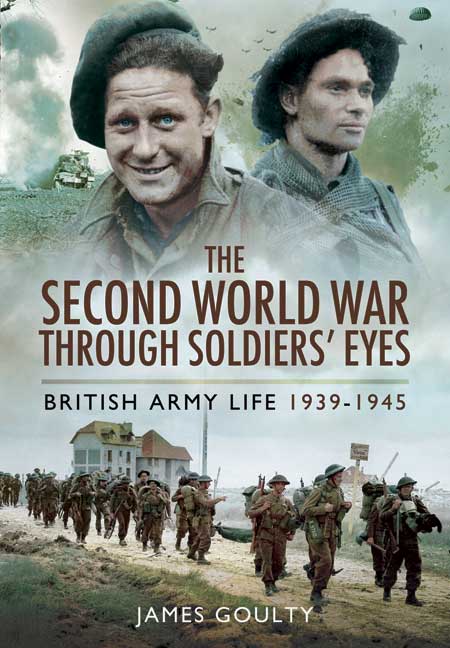
The Second World War Through Soldiers’ Eyes is available to order now from Pen and Sword.
